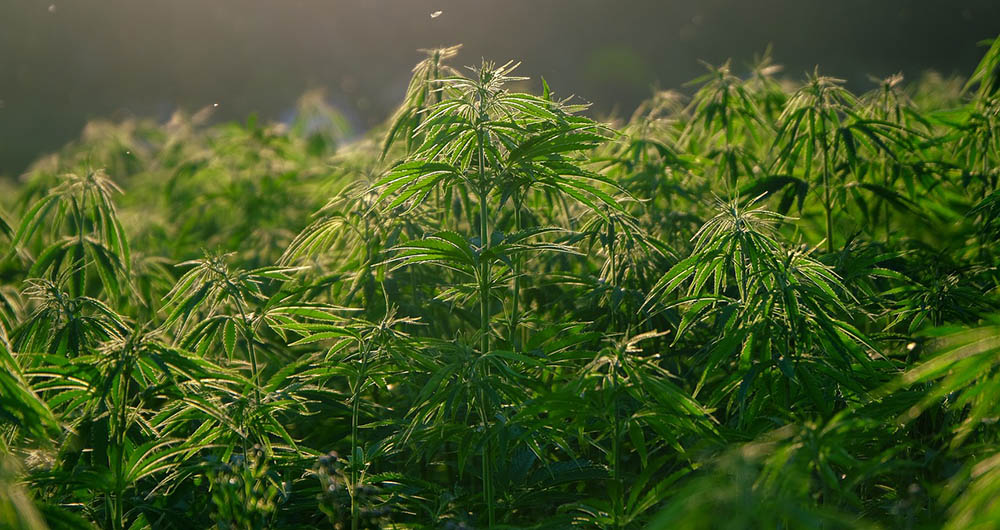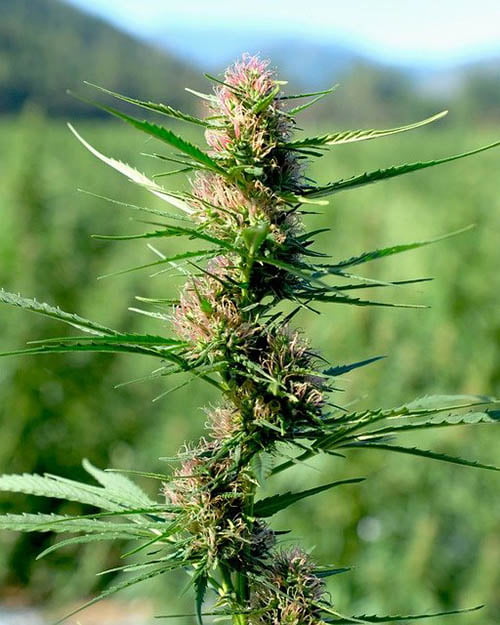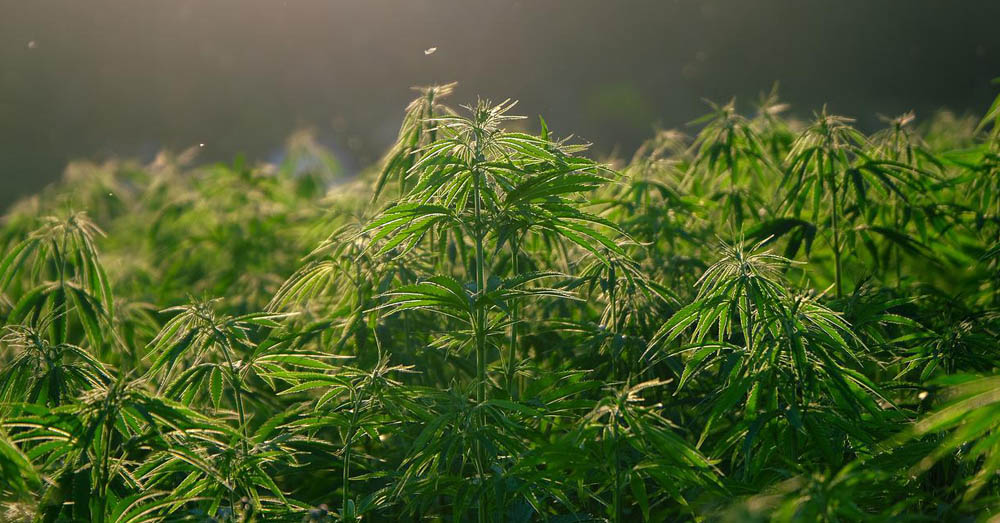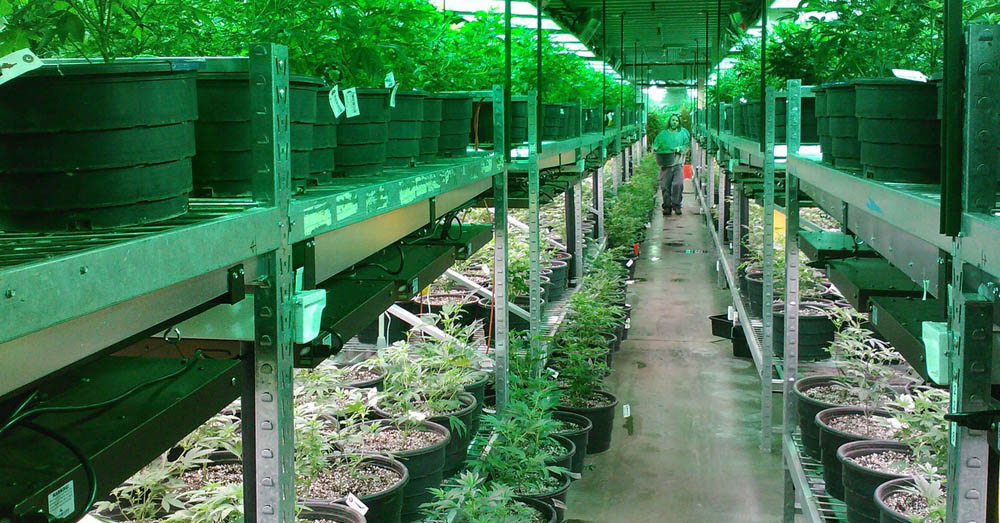Overview of Cannabis Plant Anatomy
Everyone loves the fan-shaped leaves and resinous buds of the cannabis plants, but there is more than meets the eye – a complex network of unique structures working together to make the plant grow and produce buds.
To be a successful grower, it is essential to learn about the anatomy of the cannabis plant anatomy during the different stages of its growth. The anatomy of the cannabis plant is not very different from that of other flowering plants.
So, if you have some basic knowledge of the anatomy of plants, learning about the cannabis plant anatomy will not feel strange. Even if you have absolutely no idea of the anatomy of plants, this is a pretty simple subject.
Although it has the same basic structure as other plants, cannabis has a unique, striking appearance that has earned it the title of ‘king of herbs.’ The cannabis plant goes through different stages throughout its life and it looks different during each stage. The stages are:
- Germination
- Seedling
- Vegetative
- Flowering

Marijuana Plant Anatomy
It takes about 3 to 8 months to grow a cannabis plant from a seedling to the flowering stage. A mature cannabis plant has five main parts: the root, the stem, the leaves, the flowers (buds), and the seeds
Whether it is Indica or Sativa, all cannabis plants have similar anatomy. Sativa strains tend to be taller and lankier while Indica plants are known to be short and stocky.
The genetics of a plant can determine some of its traits like how tall it becomes and how much foliage it produces. Some strains are tall and produce a huge canopy of leaves while others are short and produce wispy foliage.
Genetics can also determine the appearance, size, aroma, cannabinoid concentration level, and the number of flowers that a cannabis plant produces.
Male vs Female Plant
Cannabis is a dioecious plant, which means male and female plants grow separately. With that said, there are hermaphrodite cannabis plants but they are very rare.
Most cannabis plants are either male or female. It can be tricky to differentiate the male vs female plant until four weeks into their growth.
But at that stage, it is easier to tell them apart than you may imagine. The key is to look at the nodes (the part of the stem where branches extend from) to identify the pre-flower (or sex organ) of the plant.
Male cannabis plants develop small pollen sacs while female plants develop a structure known as pistils.

A hair-like formation called stigma grows from the pistols and its purpose is to catch the pollen released by the male plant for fertilization to occur.
If you search the market for cannabis seeds, you’re likely to find a lot of feminized seeds.
This can be somewhat confusing, but the reason for this is that growers usually eliminate male cannabis plants from their farms.
When male cannabis plants pollinate their female counterparts, the female stops producing resin, and all its efforts are dedicated to producing seeds. Since cannabis plants are usually bred for their resinous buds, it is counter-productive to allow pollination.
Feminized cannabis seeds produce only female plants. This is why sensimilla (seedless cannabis plants) are very popular today. Male and female cannabis plants are usually only pollinated when cross-breeding two strains to create a new strain.
Breeders usually select male plants that have particular desirable traits when pollinating a female to create a new strain.
Hermaphrodite cannabis plants are not common, and usually occur when your plant is exposed to environmental stress such as low nutrition, bad weather, and disease. Hermaphrodite plants develop both a pollen sac and the stigma and self-pollinate.
Breeders usually steer clear of hermaphrodite plants because they pass on their hermaphrodite genes in every seed they pollinate.
Parts of the Marijuana Plant
Now that we have gone over the basic anatomy of the cannabis plant, let’s take a closer look at the different parts of the plant, starting from the base.
Seedling
The seedling of the cannabis plant is the first shoot that appears after your seeds germinate. The embryonic root of the seedling is called the radicle while the two small embryonic leaves are called the cotyledon.
While the radicle will eventually form the basis of your plant root network, it is different for the cotyledon. The cotyledons aren’t true leaves, and it takes a while before the plant develops the iconic fan-shaped leaves that are characteristic of cannabis. It is virtually impossible to tell a cannabis shoot apart from the shoot of other plants.
Roots
The roots of the cannabis plant form a complex, weaving network in the soil. The root continues to grow as the plant grows. The function of the root is not only to take up nutrients and water from the soil, it also gives the plant stability and balance.
If you are growing your cannabis plant in a pot, you may need to transplant it to a bigger pot as the plant grows to ensure there is ample room for the root to expand and do its work.
If you grow your plant in a small pot, the root will not develop properly, and as a result, the plant will also not grow to its full potential. The root of cannabis plants can die if you water it too much. There are many guides online explaining how frequently to water cannabis plants.
Stem
The stem is the central column of your plant, running from the root all the way to the top of your plant. The stem tends to be thicker at the base and more slender at the top. The branches and eventually buds develop from the stem. The stem provides some stability and support to your plant. The stem can be described as the spinal cord of the plant.
Nodes
Nodes are the point on the stem where branches connect to the stem. This is also where pre-flowers are formed. The distance between each node on the stem is called an internode and the distance between each internode is usually the same. Pre-flowers and buds grow from the node.
Stipules
Stipules are small, thin, dagger-looking, leaf-like formations that develop on the nodes of cannabis plants. The exact purpose of stipules remains unknown. However, they are thought to protect the new shoots developing from the nodes. New growers often confuse stipules with pre-flowers but they’re different.
Branches
Branches shoot from the stem of the plant and bear leaves. Nodes, stipules, pre-flowers, and weed buds develop on branches. Branches provide stability to plants.
Bract
Bracts are at-shaped leaf-looking structures that form on nodes. They contain the female reproductive parts of the cannabis plant and usually have a high concentration of resin glands called trichomes. The function of the bract is to protect the developing flower. Bracts come in different colors, shapes, and sizes.
Calyx
The calyx is a translucent layer at the base of the flower that protects it and provides some stability at its base. The calyx is usually invisible to the naked eye. The calyx is the first part of the flower that is formed.
The calyx is usually mistaken for the beach, and that is understandable since they are both parts of the composition of the pre-flower. However, they are different structures with specific purposes.
Pistil
The pistil is one of the key reproductive organs of the female cannabis plant. It is made up of the stigma, the style, and the ovary which are primarily responsible for the reproductive process of the plant.
The pistil receives the pollen from the male cannabis plant so that pollination can occur. Pistils are one of the key markers that differentiate female cannabis plants from their male counterparts.
Stigma
The stigma is often erroneously labeled as the pistil, while it is part of the pistil, there is more to the structure than the stigma. The stigma is hair-like growths that develop from the pistil. Pistils usually appear white during the early flowering stage, and progressively turn yellowish and brown as the flower grows.
Trichomes
Trichomes are mushroom-shaped resin glands that appear as a blanket of crystal-like growth on cannabis buds and the reproductive parts of the plant during the flowering stage. Trichomes produce terpenes and cannabinoids.
Cannabis plants are thought to have developed trichomes as a defensive mechanism to keep predators away. However, thanks to their production of terpenes and cannabinoids, the cannabis plant has become one of the most beloved plants in the world.
Cola
Cola is the flowering top of the female cannabis plant where buds eventually develop. Colas are usually a cluster of buds. Smaller colas usually grow along the nodes on the lower section of the plant.
However, the main cola (also known as a terminal bud or apical bud) grows at the top of the plant. Colas grow where the plant receives ample light. There are different techniques for increasing the size of the cola so you get bigger buds when it is time to harvest.
Fan Leaves
Fan leaves are leaves that grow from the branches and stems of the cannabis plant. They make up the main foliage of the plant and are responsible for absorbing light for photosynthesis.
The appearance of a fan leaf varies from one plant to the other. Sativa plants generally have slender leaves while Indica plants have wider leaves. Although some cannabis plants can have just five fans in a leaf, others can have up to nine fans in a single leaf.
Fan leaves have little or no resin so they aren’t thought to be useful. However, it can be used for extracts, infusions, tea, salads, smoothies, tinctures, hash, and more.
Sugar Leaves
Sugar leaves are small, spiky leaves that grow out of cannabis buds during the flowering stage. They are usually covered with trichomes that look like sugar crystals, thus the name sugar leaves.
If you have ever observed a weed bud close up, then you must be familiar with sugar leaves. Sugar leaves are usually trimmed after the buds are harvested. The leaves can be used to make kief, cannabutter, and bubble hash.
With this basic understanding of the cannabis plant anatomy, you’re in a good position to begin your journey as a grower. For more consistent and time-tested results, it is better to grow with a clone than a seed.
Growing cannabis can be an easy and rewarding experience, but it can also be difficult and frustrating if you don’t do things right and provide everything your plant needs to thrive. Thankfully, there are lots of valuable resources online that can guide you through this journey.
The Beauty of Cannabis Buds
There’s much to cannabis buds than meets the eye. The intricate structure of leaves, colors, and crystals is the result of a complex biological process. The shape and general appearance of cannabis buds differ depending on the strain and genetics of the plant.
For example, some buds may have more trichomes than others, some may be round while others are oval-shaped.
The buds we harvest are the flowers of the female cannabis plant. Male plants do not produce buds, but instead, create pollen sacs for fertilization.
Technically it is possible to smoke the male cannabis plant or use it to make oils and edibles, however, it produces very low levels of cannabinoids and terpenes so it isn’t quite worth it.
The main purpose of the male cannabis plant is to pollinate the female plant and preserve their DNAs in the seeds the latter produces.
What do Buds Look Like When They Start to Form?
The cannabis plant starts producing flowers in the third week of its flowering stage.
The flowers grow in the nodes of the plant. A lot of new growers tend to be overly concerned about what buds look like when they form.
The truth is that they don’t look like anything special – just a bundle of pistils with stigma growing from them. During the fourth week of the flowering stage, the plant stops growing and the flowers start forming.
You’ll notice the pistils start growing into fatter, thicker shapes as they are slowly transformed into cannabis buds. As the buds develop, they start to become more colorful and develop white micro hairs known as trichomes.

In total, it takes about 7 to 9 weeks for buds to form completely on a cannabis plant once the pre-flowers first start developing.
In talking about the anatomy of the cannabis plant, it would be a great injustice not to mention mycorrhizae. Although this function is not part of the cannabis plant, it plays a vital role in promoting plant growth.
Mycorrhizae is found in the soil naturally. They absorb plant sugars and, in turn, help plants break down and absorb nutrients in the soil.
Conclusion
With this basic understanding of the cannabis plant anatomy, you’re in a good position to begin your journey as a grower. For more consistent and time-tested results, it is better to grow with a clone than a seed.
Growing cannabis can be an easy and rewarding experience, but it can also be difficult and frustrating if you don’t do things right and provide everything your plant needs to thrive. Thankfully, there are lots of valuable resources online that can guide you through this journey.




